The Edit Image window ( Drawing Editor )
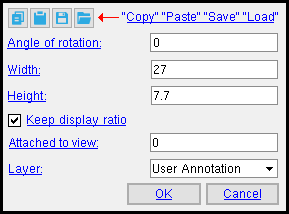
Images are PNG, GIF, JPEG or TIFF graphic files. They can be placed in any type of drawing. They can be printed, or they can serve as temporary templates for tracing or orientation. To more accurately visualize how an image will look when printed, set your " Drawing Editor background color " to white.
Format (.ext) Applications Descriptions GIF (.gif) logos, line drawings, icons GIF and PNG are similar, compressed formats. PNG is newer. Both allow transparency. PNG (.png) JPEG (.jpg, .jpeg) photographs The JPEG format can be used for photorealistic images. TIFF (.tif, .tiff) logos, line drawings A TIFF image converted into a GIF or PNG takes up less space.
- To open this window:
- Image Edit or double-click an image
- Image Edit All
- Select image, right-click, choose " Edit " on the context menu
Also see :
- Images (topic)
- Add Image (tool)
- To move an image (drag its center in Select Items mode)
- To re-size an image (drag its edge in Select Items mode)
page 1 | contents | objects > images > | objects -- images | top
![]() " Copy " " Paste " " Save " " Load " buttons :
" Copy " " Paste " " Save " " Load " buttons :
You'll find buttons like these at the top of this window. They apply to all user-editable settings that are on this window. Click here for more information.
" Save " (
) saves a file to the form/sheet-image folder (
) that is used by your current version of this program. Give the file a name that will help users in other Jobs on your network identify its purpose. " Load " (
) changes all settings on this window to those settings that are stored in the file that you select.
" Paste " and " Load " replace mixed entries to a single field with a single entry. " Copy " and " Save " ignore fields with mixed entries, treating them as if they have no entry or do not exist.
Angle of rotation: Any positive or negative (-) number of degrees.
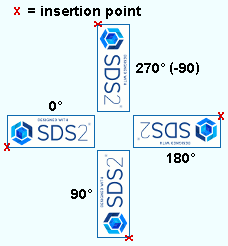
|
' 0 ' (zero) leaves the image unrotated -- in the same orientation it had in the drawing it was created from. A ' positive number ' rotates the symbol counterclockwise that number of degrees around its insertion point. A ' negative (-) number ' rotates the symbol clockwise that number of degrees. |
Width: The length (in the primary dimension " Units " or other units ) of a horizontal edge of the image when its " Angle of rotation " is ' 0 ' (zero). If " Keep display ratio " is checked, changing the " Width " also proportionally adjusts the " Height " so that the same width/height ratio is maintained.
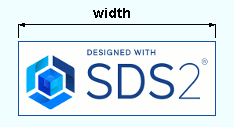
Height: The length (in the primary dimension " Units " or other units ) of a vertical edge of the image when its " Angle of rotation " is ' 0 ' (zero). If " Keep display ratio " is checked, changing the " Height " also proportionally adjusts the " Width " so that the same width/height ratio is maintained.
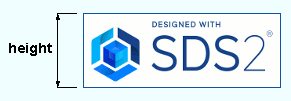
Keep display ratio
Keep display ratio
If this box is checked (
), the " Width " and " Height " of the image will remain the same ratio whenever one or the other is changed, and also when you drag the image's border to re-size it.
If the box is not checked (
), the " Width " and " Height " can be changed independently. If you drag the image to re-sized it, the image will be stretched in one direction only, instead of proportionally. Distortion will result.
Warning: Once you change the display ratio by re-sizing an image in one direction, the old display ratio is forgotten. You can't recheck this box to get it back.
Attached to view: A number designating the view that this image is attached to. For instance, a column detail may have a view of face A, face B and face C. It may also have various section views (Section A-A, Section B-B, Section C-C). All graphical objects that are in a particular view are assigned the same number.
Assigning the correct number to an object (line, weld symbol, label, etc.) provides maximum compatibility when the comment layer you add that object to is viewed or printed in a full-featured SDS2 program . System-generated submaterial details and member details are the two Drawing Editor drawing types that can have multiple views.
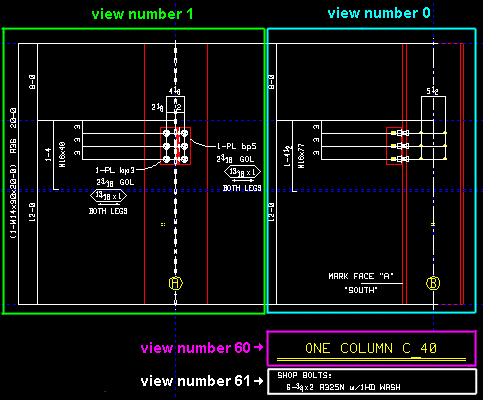
To show a view's number, you can add the X-Y-Z Display to your toolbar.

In the Drawing Editor , the X-Y-Z Display shows the view number that the point location target (
) is over.
Layer: The layer of your current drawing that this image is on.
If the layer listed here is a non-comment layer: Options on this window are read-only .
If this window is editable: You can only select a comment layer .
page 1 | contents | objects > images > | objects -- images | top
Possibility #1 :
Press the " OK " button if this window is for review only
(if you are editing an image that is not on a comment layer ).
Possibility #2 :
If you are adding or editing an image on a comment layer ,
the bottom of this window will show the following buttons:
![]()
![]()
"OK" (or the Enter key) closes this window and applies your changes to the image that you just edited.
Note: You must Save changes made to the affected image in order to make your changes permanent. You can Undo before or after you Save.
"Cancel" (or the Esc key or the ![]() button) closes this window without changing the image.
button) closes this window without changing the image.
page 1 | contents | objects > images > | objects -- images | top

